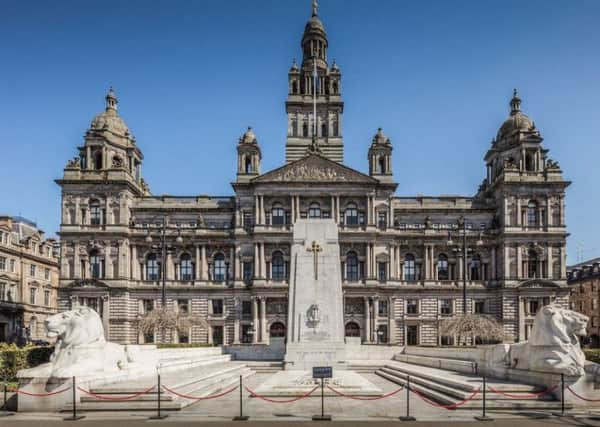Glasgow City Council: Tour of chambers


Developed in the 1880s, the chambers housed the Glasgow Town Council between 1888 and 1895 before it became the Corporation of the City of Glasgow.
It retained this title until local government re-organisation in 1975, when it became “City of Glasgow District Council”.
Advertisement
Hide AdAdvertisement
Hide AdIn 1996, following the dissolution of Strathclyde Regional Council and Glasgow District Council, their responsibilities transferred to the new single-tier local authority Glasgow City Council.
Key figures have been welcomed into the chambers over 131 years including Queen Victoria who officially opened the building in 1888 on Wednesday, August 22.
Around 10,000 people will visit the building each year with many of them participating in a free public tour which run twice a day. Councillors and staff will frequently pass tour groups engaging with the building’s history.
Visitors are welcomed at the reception by their tour guide who informs them that Scottish architect William Young from Paisley created the building.
Advertisement
Hide AdAdvertisement
Hide AdMr Young won a competition to design and build the chambers and was allocated £150,000 to complete the project.
The foundation stone laid in 1883 attracted 600,000 people into the city. The building took five years to complete and came in over budget at £500,000.
It was then opened to the public with more than 400,000 people coming to visit it in just a 10-day period.
There are two sides to the building – the civic side and the working side. The civic side has the largest marble staircase in western Europe at three-storeys high compared to the Vatican which is just two-storeys high.
Advertisement
Hide AdAdvertisement
Hide AdIn the reception area the Glasgow Coat of Arms, which incorporates a number of symbols and emblems associated with the life of Glasgow’s patron saint Kentigern, often known as St Mungo, is painted on the floor.
On the ceiling above are 1.5 million mosaic tiles which were glued on by hand. Labourers put the tiles onto pieces of paper before attaching them to the ceiling.
As the visitors leave the reception they are taken to the working side of the building which includes committee rooms where smaller meetings are held as well as the council chambers where full council meetings run.
Less money was spent on the working side and some of the panels have been painted to look like marble to save money.
Advertisement
Hide AdAdvertisement
Hide AdThere is only one piece of the white marble on this side of the building which is the Lion which sits at the foot of the stone staircase.
Legend has it that the lion was placed there to protect the Lord Provost whose office sits at the top of the stairs. Many people will rub its nose for good luck.
During the tour, guests are normally taken to the council chambers but as it is being renovated throughout recess, they are shown the banqueting suit instead.
The room is 110ft long, 48ft wide and 52ft high and is used for dinners, awards and dances.
Advertisement
Hide AdAdvertisement
Hide AdAbove the middle-arched window are the words “Victoria Queen by the Grace of God” which was gifted to Queen Victoria in 1897.
The ceiling above has been decorated in gold leaf. The pattern in the ceiling is reflective in the pattern in the carpet below – although this is not the original carpet.
At the top of the building is the portrait gallery with paintings of the Lord Provosts dating back to the 1900s. A special mention is given to Robert Stewart of Murdostoun who was the Lord Provost between 1851 to 1856.
He was painted to commemorate his public services by successfully promoting the Waterworks Act of 1855 where citizens of Glasgow obtained an abundant supply of pure water from Loch Katrine.
Advertisement
Hide AdAdvertisement
Hide AdCouncil staff are proud of their history and enjoy showing tourists and locals around the building.
A spokeswoman said: “We run guided tours for the public Monday – Friday at 10:30am and 2:30pm on a first come first come basis. There is no booking system and all tours can be subject to cancellation.
“We also allow private groups like churches, community groups, tour parties, schools and walking groups to book a private tour. The maximum number of private tours we accommodate is one a day. We try to limit each tour to 25 people.
“Last year (2018) we welcomed around 10, 200 visitors to the City Chambers for guided tours. Of those, 136 were for private groups.
Advertisement
Hide AdAdvertisement
Hide Ad“Our knowledgeable guides are made up of around 14 reception staff and attendant staff. The tours are hugely popular with tourists although we are unable to confirm when they came from.”
For further details, visit City Chambers Tours